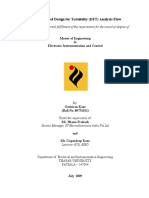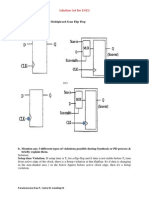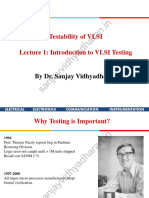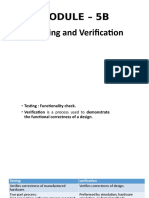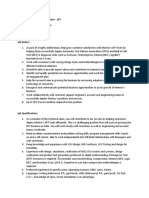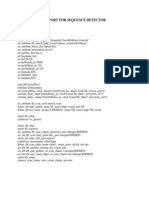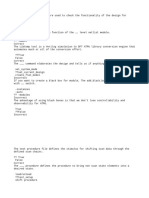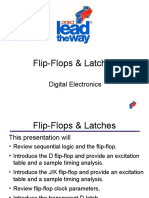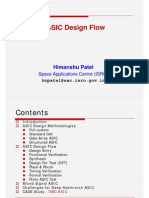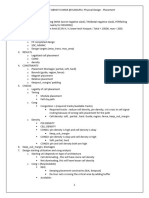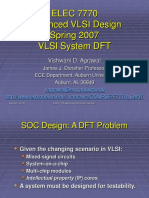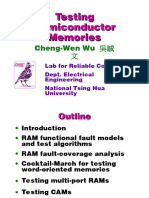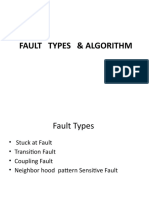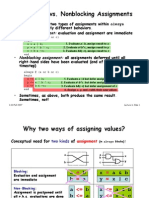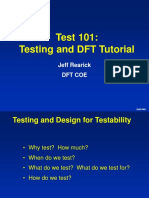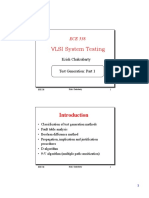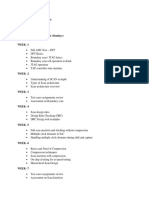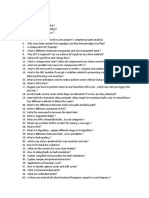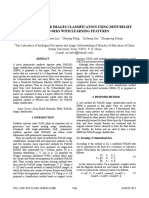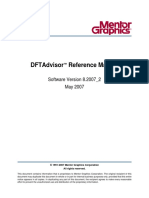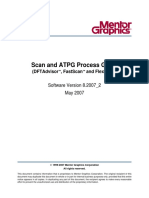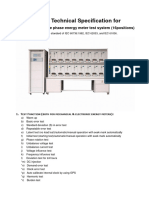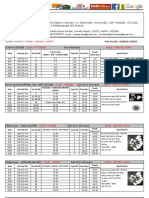ECE 538
VLSI System Testing
Krish Chakrabarty
Lecture 2:
Test Process and Equipment
Krish Chakrabarty 1
Lecture 2
VLSI Testing Process and
Equipment
• Motivation
• Types of Testing
• Test Specifications and Plan
• Test Programming
• Test Data Analysis
• Automatic Test Equipment
• Parametric Testing
• Summary
Krish Chakrabarty 2
1
� Motivation
• Need to understand some Automatic Test Equipment
(ATE) technology
– Influences what tests are possible
– Serious analog measurement limitations at high digital
frequency or in the analog domain
– Need to understand capabilities for digital logic, memory, and
analog test in System-on-a-Chip (SOC) technology
• Need to understand parametric testing
– Used to take setup, hold time measurements
– Use to compute VIL , VIH , VOL , VOH , tr , tf , td , IOL, IOH , IIL,
IIH
Krish Chakrabarty 3
Types of Testing
• Verification testing, characterization testing, or
design debug
– Verifies correctness of design and of test procedure
– usually requires correction to design
• Manufacturing testing
– Factory testing of all manufactured chips for
parametric faults and for random defects
• Acceptance testing (incoming inspection)
– User (customer) tests purchased parts to ensure
quality
Krish Chakrabarty 4
2
� Testing Principle
Krish Chakrabarty 5
Automatic Test Equipment
Components
• Consists of:
– Powerful computer
– Powerful 32-bit Digital Signal Processor (DSP) for
analog testing
– Test Program (written in high-level language)
running on the computer
– Probe Head (actually touches the bare or packaged
chip to perform fault detection experiments)
– Probe Card or Membrane Probe (contains electronics
to measure signals on chip pin or pad)
Krish Chakrabarty 6
3
� Characterization Test
• Worst-case test
– Choose test that passes/fails chips
– Select statistically significant sample of chips
– Repeat test for every combination of 2+ environmental
variables
– Plot results in Schmoo plot
– Diagnose and correct design errors
• Continue throughout production life of chips to
improve design and process to increase yield
Krish Chakrabarty 7
Schmoo Plot
Krish Chakrabarty 8
4
� Manufacturing Test
• Determines whether manufactured chip meets
specs
• Must cover high % of modeled faults
• Must minimize test time (to control cost)
• No fault diagnosis
• Tests every device on chip
• Test at speed of application or speed guaranteed
by supplier
Krish Chakrabarty 9
Burn-in or Stress Test
• Process:
– Subject chips to high temperature & over-voltage
supply, while running production tests
• Catches:
– Infant mortality cases – these are damaged chips that
will fail in the first few days of operation – causes bad
devices to actually fail before chips are shipped to
customers
– Freak failures
Krish Chakrabarty 10
5
� Types of Manufacturing Tests
• Wafer sort or probe test – done before wafer is
scribed and cut into chips
– Includes test site characterization – specific test
devices are checked with specific patterns to
measure:
• Gate threshold
• Polysilicon field threshold
• Poly sheet resistance, etc.
• Packaged device tests
Krish Chakrabarty 11
Sub-types of Tests
• Parametric – measures electrical properties of
pin electronics – delay, voltages, currents, etc. –
fast and cheap
• Functional – used to cover very high % of
modeled faults – test every transistor and wire
in digital circuits – long and expensive
Krish Chakrabarty 12
6
� Two Different Meanings of
Functional Test
• ATE and Manufacturing World – any vectors
applied to cover high % of faults during
manufacturing test
• Automatic Test-Pattern Generation World –
testing with verification vectors, which
determine whether hardware matches its
specification – typically have low fault coverage
(< 70 %)
Krish Chakrabarty 13
Test Specifications & Plan
• Test Specifications:
– Functional Characteristics
– Type of Device Under Test (DUT)
– Physical Constraints – Package, pin numbers, etc.
– Environmental Characteristics – supply,
temperature, humidity, etc.
– Reliability – acceptance quality level (defects/
million), failure rate, etc.
• Test plan generated from specifications
– Type of test equipment to use
– Types of tests
– Fault coverage requirement
Krish Chakrabarty 14
7
� Test Programming
Krish Chakrabarty 15
Test Data Analysis
• Uses of ATE test data:
– Reject bad DUTs
– Fabrication process information
– Design weakness information
• Devices that did not fail are good only if tests
covered 100% of faults
• Failure mode analysis (FMA)
– Diagnose reasons for device failure, and find design
and process weaknesses
– Allows improvement of logic & layout design rules
Krish Chakrabarty 16
8
�ADVANTEST Model T6682
ATE
Krish Chakrabarty 17
LTX FUSION HF ATE
Krish Chakrabarty 26
9
� Multi-site Testing – Major
Cost Reduction
• One ATE tests several (usually identical) devices at the
same time
• For both probe and package test
• DUT interface board has > 1 socket
• Add more instruments to ATE to handle multiple
devices simultaneously
• Usually test 2 or 4 DUTS at a time, usually test 32 or 64
memory chips at a time
• Limits: # instruments available in ATE, type of
handling equipment available for package
Krish Chakrabarty 28
Set-up and Hold Time Tests
Krish Chakrabarty 31
10
� Wrap-Up
• Parametric tests – determine whether pin electronics
system meets digital logic voltage, current, and delay
time specs
• Functional tests – determine whether internal logic/
analog sub-systems behave correctly
• ATE Cost Problems
– Pin inductance (expensive probing)
– Multi-GHz frequencies
– High pin count (1024)
• ATE Cost Reduction
– Multi-Site Testing
– DFT methods like Built-In Self-Test
Krish Chakrabarty 33
Economics of Design for
Testability (DFT)
• Consider life-cycle cost; DFT on chip may impact
the costs at board and system levels.
• Weigh costs against benefits
• Cost examples: reduced yield due to area overhead,
yield loss due to non-functional tests
• Benefit examples: Reduced ATE cost due to self-
test, inexpensive alternatives to burn-in test
Krish Chakrabarty 34
11
� Benefits and Costs of DFT
Level Design Fabri- Manuf. Maintenance Diagnosis Service
and test cation Test test and repair interruption
Chips +/- + -
Boards +/- + - -
System +/- + - - - -
+ Cost increase
- Cost saving
+/- Cost increase may balance cost reduction
Krish Chakrabarty 35
Summary
• Economics teaches us how to make the right trade-offs.
• It combines common sense, experience and mathematical
methods.
• The overall benefit/cost ratio for design, test and
manufacturing should be maximized; one should select the
most economic design over the cheapest design.
• A DFT or test method should be selected to improve the
product quality with minimal increase in cost due to area
overhead and yield loss.
Krish Chakrabarty 36
12

